foodie chipmunk
Chipmunks are small, striped rodents of the family Sciuridae. Chipmunks are found in North America, with the exception of the Siberian chipmunk which is found primarily in Asia.
Chipmunks may be classified either as a single genus, Tamias, or as three genera: Tamias, of which the eastern chipmunk (T. striatus) is the only living member; Eutamias, of which the Siberian chipmunk (E. sibiricus) is the only living member; and Neotamias, which includes the 23 remaining, mostly western, species. These classifications were treated as subgenera due to the chipmunks' morphological similarities. As a result, most taxonomies over the twentieth century have placed the chipmunks into a single genus. However, studies of mitochondrial DNA show that the divergence between each of the three chipmunk groups is comparable to the genetic differences between Marmota and Spermophilus,so the three genera classifications have been adopted here.
The common name originally may have been spelled "chitmunk", from the native Odawa (Ottawa) word jidmoonh, meaning "red squirrel" (cf. Ojibwe ᐊᒋᑕᒨ ajidamoo). The earliest form cited in the Oxford English Dictionary (from 1842) is "chipmonk", but "chipmunk" appears in several books from the 1820s and 1830s. Other early forms include "chipmuck" and "chipminck", and in the 1830s they were also referred to as "chip squirrels", probably in reference to the sound they make. In the mid-19th century, John James Audubon and his sons included a lithograph of the chipmunk in their Viviparous Quadrupeds of North America, calling it the "chipping squirrel [or] hackee". Chipmunks have also been referred to as "striped squirrels", "timber tigers", "minibears", and "ground squirrels" (although the name "ground squirrel" usually refers to other squirrels, such as those of the genus Spermophilus)
Chipmunks have an omnivorous diet primarily consisting of seeds, nuts and other fruits, and buds.They also commonly eat grass, shoots, and many other forms of plant matter, as well as fungi, insects and other arthropods, small frogs, worms, and bird eggs. They will also occasionally eat newly hatched baby birds.Around humans, chipmunks can eat cultivated grains and vegetables, and other plants from farms and gardens, so they are sometimes considered pests.Chipmunks mostly forage on the ground, but they climb trees to obtain nuts such as hazelnuts and acorns. At the beginning of autumn, many species of chipmunk begin to stockpile nonperishable foods for winter. They mostly cache their foods in a larder in their burrows and remain in their nests until spring, unlike some other species which make multiple small caches of food. Cheek pouches allow chipmunks to carry food items to their burrows for either storage or consumption.
-
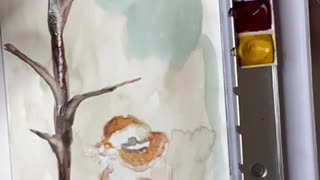 30:16
30:16
Cr8urCanvas
2 years agoChuck the Chipmunk
35 -
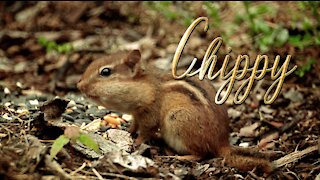 1:39
1:39
CurtBowenADM
2 years ago $0.01 earnedChippy the Chipmunk
29 -
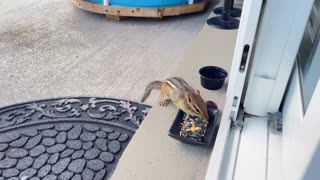 3:46
3:46
My Music and random stuff
8 months agoChippy the Chipmunk
4 -
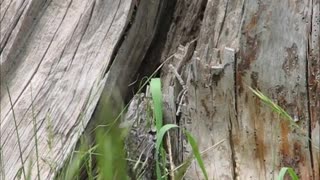 1:41
1:41
HappyCamper9
3 years agoBaby Chipmunk
196 -
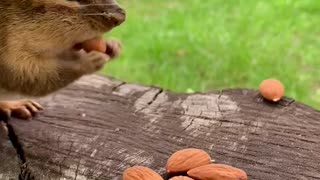 0:51
0:51
Banestwin
2 years agoChipmunk 🐿 aka Chippy
81 -
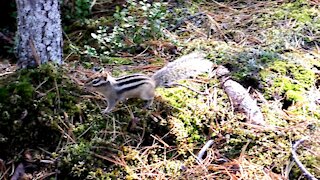 0:28
0:28
irvet20065
3 years ago $0.03 earnedNimble Chipmunk
96 -
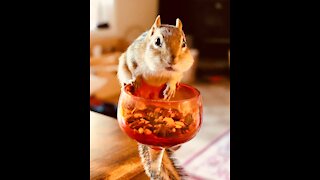 2:09
2:09
Lou_Pinto
3 years agoDizzy the Chipmunk
351 -
 0:35
0:35
Outdoor Critters
2 years agoSquirrel and a Chipmunk
88 -
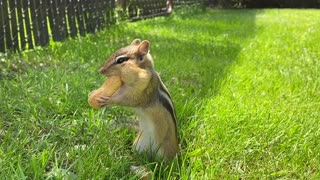 0:57
0:57
Outdoor Critters
2 years agoA Chipmunk and peanuts
34 -
 25:08
25:08
Cr8urCanvas
2 years agoCharlene the Chipmunk
8